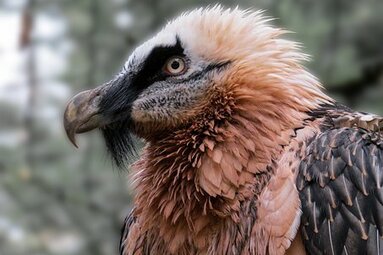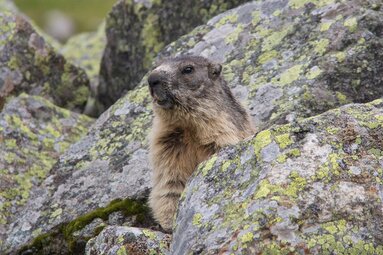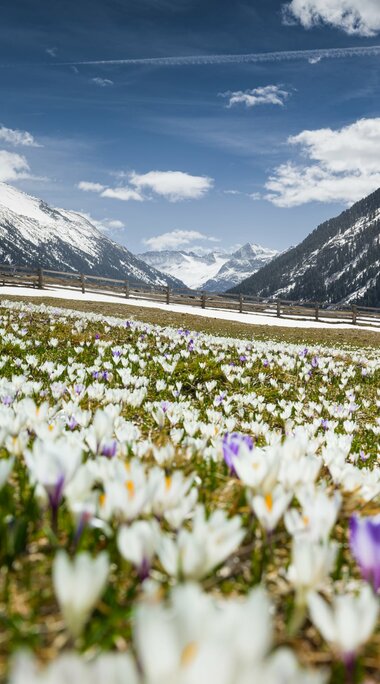Fauna of the Hohen Tauern
More than half of all amphibians, reptiles, birds and mammals that occur in Austria are found in the Hohe Tauern National Park. The ibex, chamois, marmot, golden eagle and bearded vulture are considered the Big Five in the Hohe Tauern National Park.
Golden eagle

The golden eagle is a powerful bird of prey with a wingspan of up to 220 cm. Older birds appear very dark, young birds stand out due to the white wing spots and the white tail with black end band. Characteristic are also the strongly fingered hand wings and the rather broad tail. The golden eagle owes its "proud" look to special bone formations above the eyes.
Bearded vulture

Among the bird life of the Hohe Tauern, the bearded vultures are a distinct speciality. It is the only area in the entire Alpine region, even in the whole of Central Europe, where wild living vultures can be regularly observed. With a wingspan of up to 2.9 metres, the bearded vulture is one of the largest flying birds in the world.
Bearded vultures are resident birds that remain in their breeding territory all year round.
Ibex

The ibex, one of the most imposing mammals of the Hohe Tauern, is one of the true goats and can therefore successfully mate with the domestic goat. With its stocky, muscular build, it reaches a head trunk length of 150 cm and a shoulder height of 90 cm. The does weigh about 45 kg, whereas bucks can weigh over 100 kg. The buck has powerful, backward-curved horns up to 1 m long, while the doe has only short, barely curved horns. Thanks to their deeply split hooves with rubbery toe pads, ibexes are good climbers and jumpers. The females with the young and the bucks live in separate herds. Only the old bucks become loners.
Chamois

Among the large animals of the Hohe Tauern, the diurnal, goat-like chamois can be observed most often. Its summer coat is rusty brown, in winter the fur turns blackish brown. Both sexes wear horns, also called crucks. The "chamois beard" is made from the long hairs of the dark eel on the back.
Females often live together with fawns in herds led by an old goat. The cohesion of the herd can vary greatly depending on the season. The younger bucks also join together in herds, while the old bucks live as distinct loners. Only during the mating season in November do the bucks join the herds. There are fierce territorial fights between rival bucks.
Marmot

The Alpine Marmot – also colloquially knownas "Mankei" – lives in tight-knit families underground. Its dwellings are located in alpine meadows, boulder fields and alpine land at 1,400 m to 2,700 m altitude. Marmots warn each other of impending danger by whistling. A series of whistles announces danger on the ground, e.g. a human approaching, a long whistle means "danger from the air", mostly in form of an eagle.
Around 1800, marmots became extinct in the Hohe Tauern. This was mainly due to the "Manke-lard", the marmot's fat, still regarded as a universal remedy. It was only in the beginning of the 20th century that marmots returned to the Hohe Tauern region. Today they number among the mammals most frequently spotted living in the wilderness of the Hohe Tauern.


